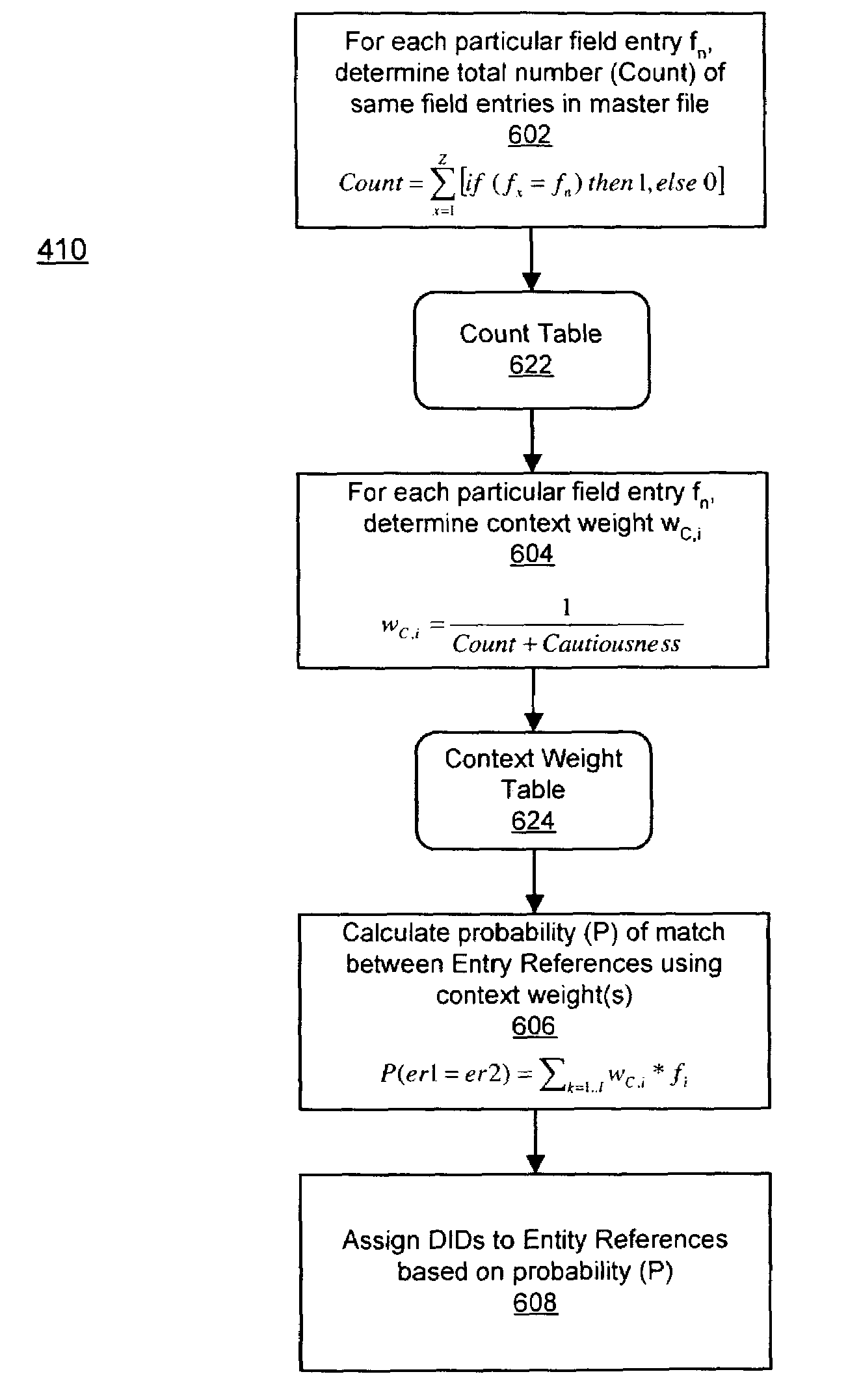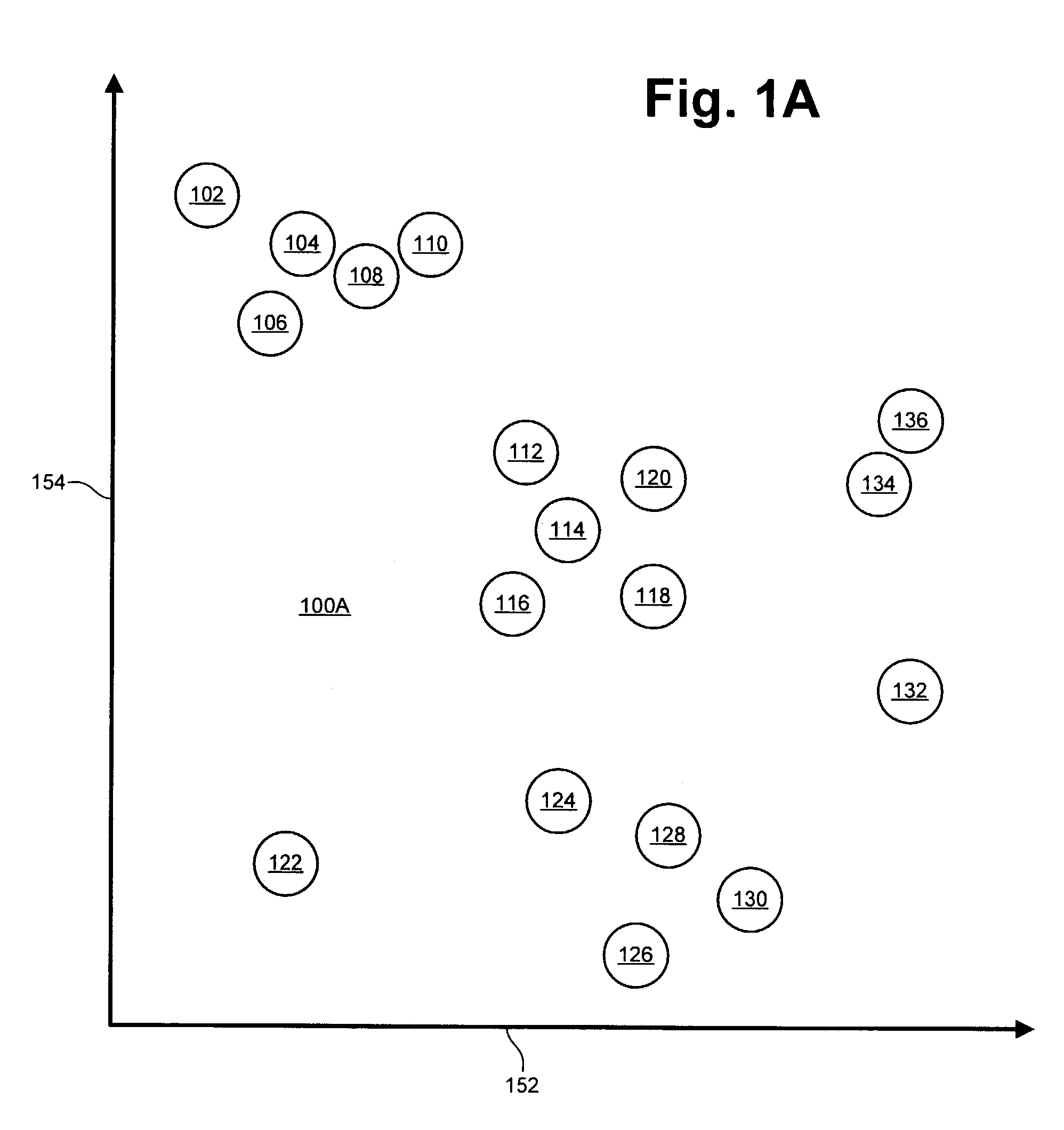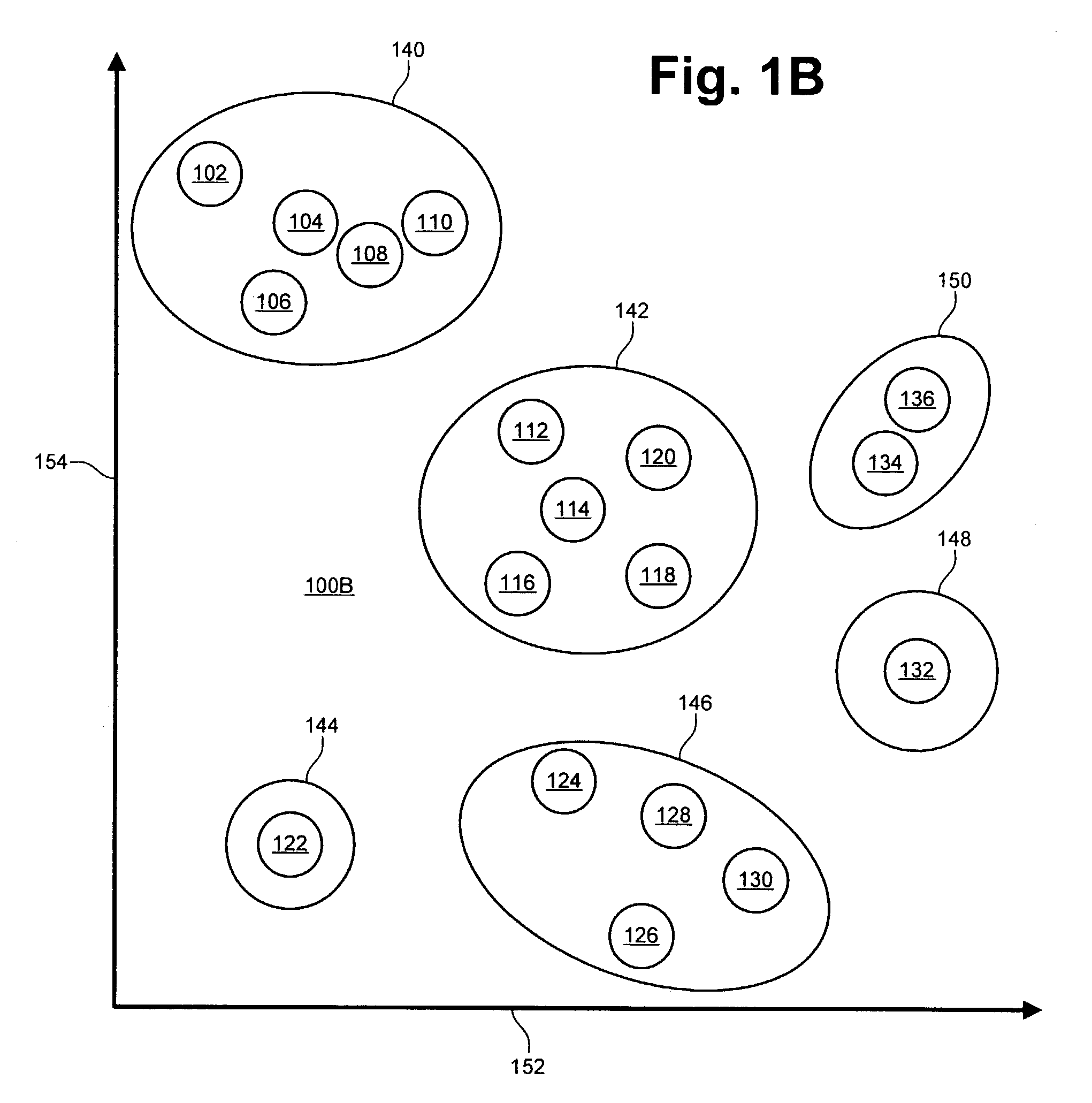Method and system for processing data records
a data record and data processing technology, applied in the field of database and information management, can solve the problems of insufficient or at least in need of improvement in the efficient and effective technology of accessing, processing, verifying, analyzing and decisioning relating to such vast amounts of data, and the disadvantage of difficult modification or updating, difficult to implement in computer code, etc., and achieve the effect of reducing the data s
- Summary
- Abstract
- Description
- Claims
- Application Information
AI Technical Summary
Benefits of technology
Problems solved by technology
Method used
Image
Examples
Embodiment Construction
[0048]The following description is intended to convey a thorough understanding of the present invention by providing a number of specific embodiments and details involving processing data to determine links between entity references to a particular entity and associations among entities. It is understood, however, that the present invention is not limited to these specific embodiments and details, which are exemplary only. It is further understood that one possessing ordinary skill in the art, in light of known systems and methods, would appreciate the use of the present invention for its intended purposes and benefits in any number of alternative embodiments, depending upon specific design and other needs.
[0049]At least one embodiment of the present invention may be employed in systems designed to provide, for example, database searches for finding people, businesses, and assets. The results of the system query operations may be presented to users in any of a number of useful ways,...
PUM
 Login to View More
Login to View More Abstract
Description
Claims
Application Information
 Login to View More
Login to View More - R&D
- Intellectual Property
- Life Sciences
- Materials
- Tech Scout
- Unparalleled Data Quality
- Higher Quality Content
- 60% Fewer Hallucinations
Browse by: Latest US Patents, China's latest patents, Technical Efficacy Thesaurus, Application Domain, Technology Topic, Popular Technical Reports.
© 2025 PatSnap. All rights reserved.Legal|Privacy policy|Modern Slavery Act Transparency Statement|Sitemap|About US| Contact US: help@patsnap.com



